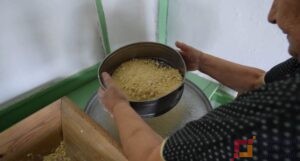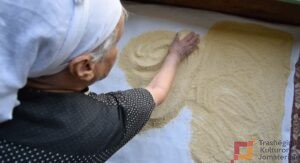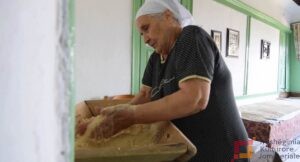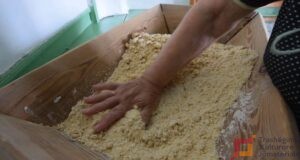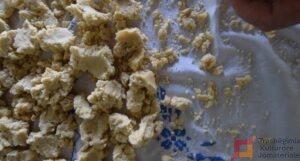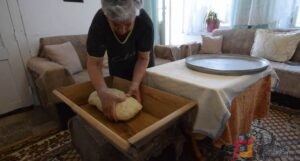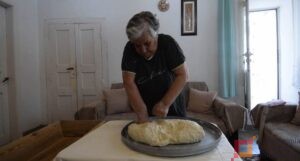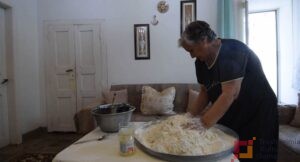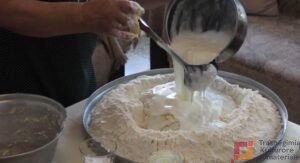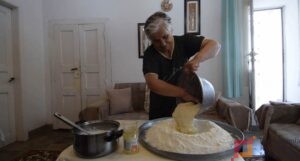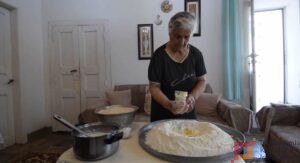Trahana, like most of the zahire-s (stock of eatables), is typically made by the end of summer in Gjirokastra by women and girls, to be consumed and tasted throughout the winter. There is no Girokastra family to make without the artisanal trahana. It comes in different types across Albania, but in Gjirokastra it is mainly prepared with milk or yogurt.
Making trahana:
The milk is made ready two or three days before and left under environmental temperature, in a container to “stiffen” until it becomes a thick mass like yogurt. Every three kilograms of flour need one and a half liters of milk.
First, the flour is tipped into a pan and a well is formed in the center where the already “thickened” milk is added with okare (a measuring cup). Next, the butter is also dipped in. If choosing to prepare a large amount of trahana, these ingredients will be proportioned to approximately 10 kg of flour and 1 kg of butter.
In order for the dough to leaven well, a little “sourdough” is prepared beforehand and added to the existing portion of the dough. The prepared dough is dumped into a wooden trough, kneaded continually so that it is not shaggy, unkempt, and getting crusty, and then covered with a clean kitchen napkin.
After about 7 days, the dough has leavened, as clearly proven by the ferment, smell, and easy cutting into small pieces.
Further, the small dough balls are put onto the pan, in airy and dry places. These small buns should be dried enough to prevent losing the whole moisture so that they can be punched down and worked on repeatedly.
After temporary drying, the next step goes on with sifting, where the trahana is cracked and comes out thin.
The wet trahana is spread on sheets, which are used only for zahiretë (stock of eatables), and laid out across the room or in cool moisture-free places until it dries completely. Now it is time to pack it in cotton fabric bags. If this process is done properly, the already-made trahana can be preserved beyond the next winter months.
Trahana can be consumed even shortly after drying.
During cooking, trahana is mixed with bread, butter or/and olive oil, white cheese, and paprika, as desired.


